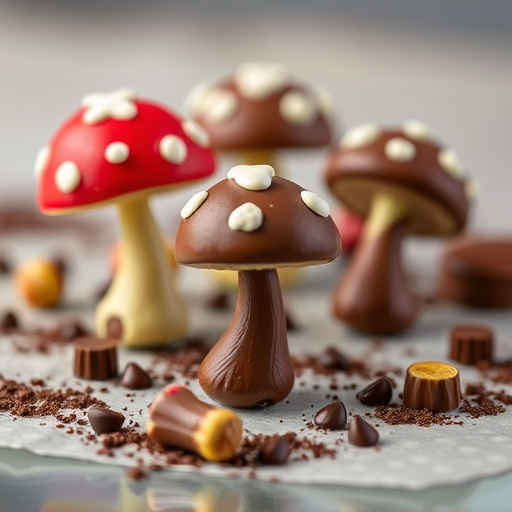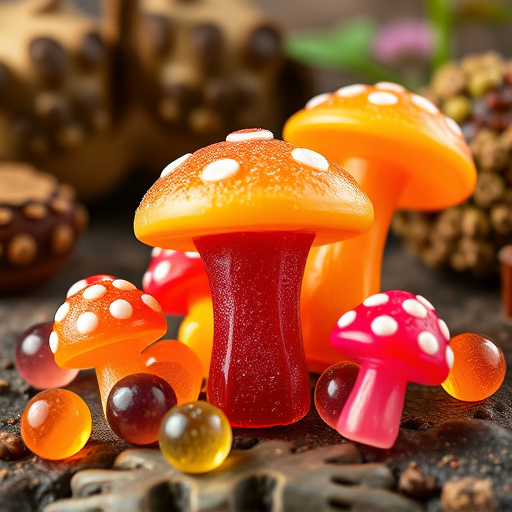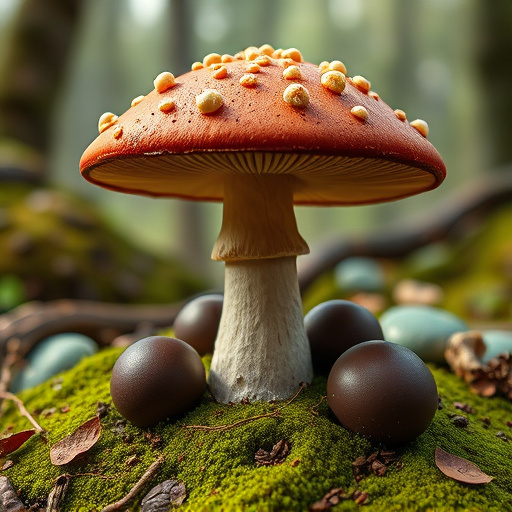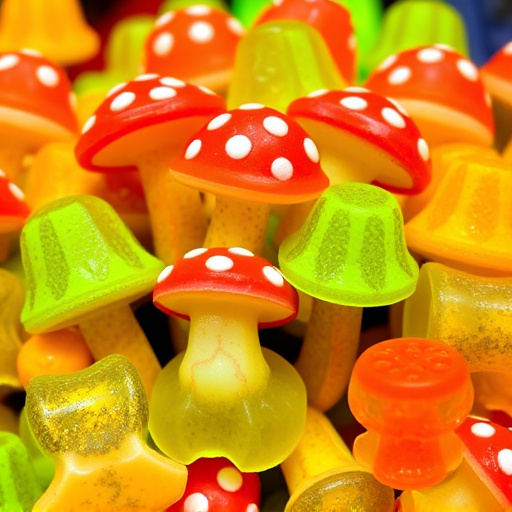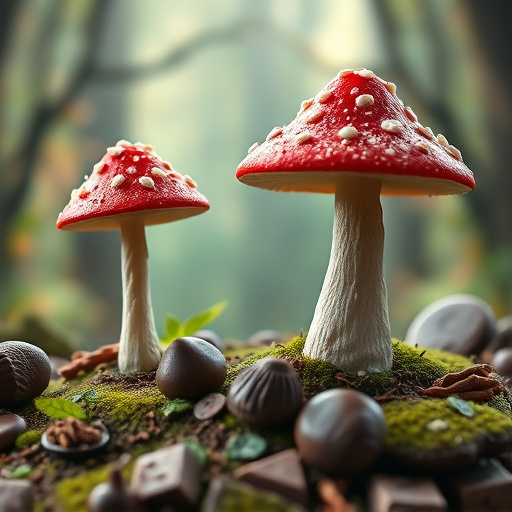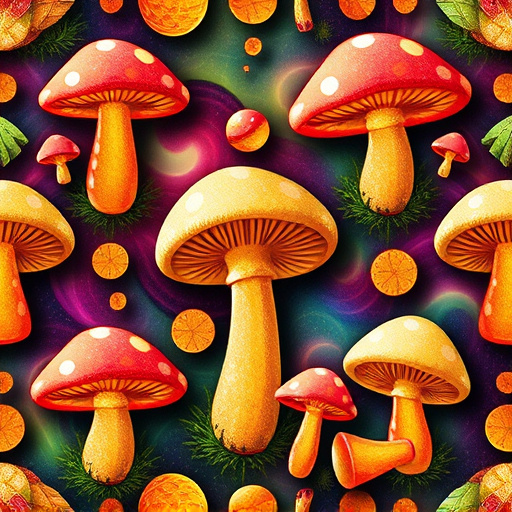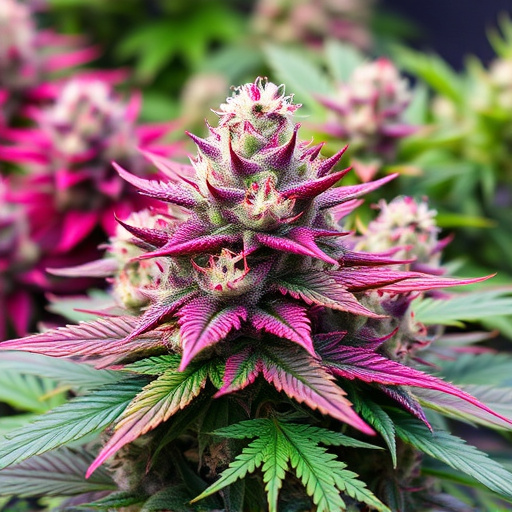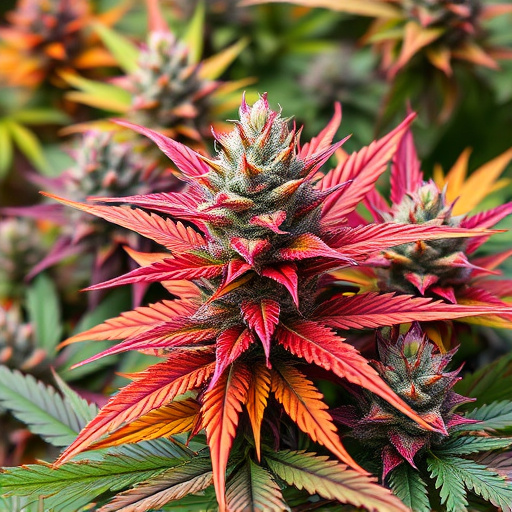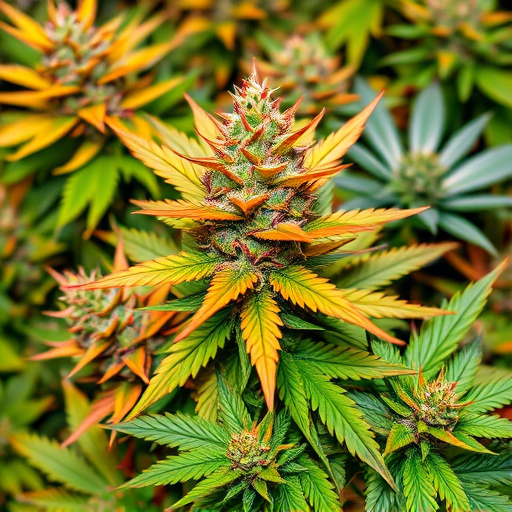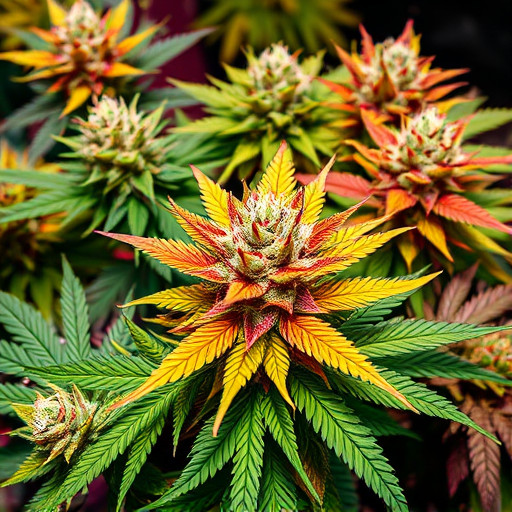The stunning colors of cannabis flowers result from complex chemical interactions, particularly between cannabinoids, terpenes, anthocyanins, and carotenoids. These compounds not only contribute to the plant's aroma, effects, and health indicators but also create a diverse visual spectrum in colorful marijuana strains. Environmental factors further enhance these colors, making each flower a unique work of art that reflects its intricate chemical makeup.
“Unveil the secrets behind the captivating color transformation of cannabis flowers in this comprehensive guide. We explore the intricate chemistry, from the role of cannabinoids and terpenes to the unexpected contribution of carotenoids. Environmental factors play a pivotal role, with light exposure, temperature, and humidity all influencing the final hue.
Discover the art of cultivating desired colorful marijuana strains through advanced techniques like selective breeding, controlled environment agriculture (CEA), and expert tips for growers. Uncover how these methods ensure consistent and vibrant colors in your cannabis gardens.”
- The Chemical Composition of Cannabis and Pigmentation
- – Understanding Cannabinoids and Terpenes
- – The Role of Carotenoids in Cannabis Coloration
The Chemical Composition of Cannabis and Pigmentation

The chemical composition of cannabis is a complex topic, but it holds the key to understanding why different strains exhibit such a wide range of colors. Cannabis flowers contain various compounds known as cannabinoids and terpenes, which contribute to their unique appearance and characteristics. These chemicals not only influence the plant’s aroma and flavor but also play a significant role in its pigmentation. Pigmentation in cannabis is primarily derived from two types of compounds: anthocyanins and carotenoids. Anthocyanins are responsible for the vibrant red, purple, and blue hues often seen in marijuana strains, while carotenoids contribute to the yellow, orange, and brown shades.
The interaction between these chemicals results in the breathtaking colors we associate with colorful marijuana strains. Different environmental factors, such as light exposure and temperature, can also influence the expression of these pigments, leading to variations in color even within the same strain. This dynamic interplay of chemistry and environment ensures that each cannabis flower is a unique masterpiece, offering a visual representation of the plant’s complex chemical profile.
– Understanding Cannabinoids and Terpenes
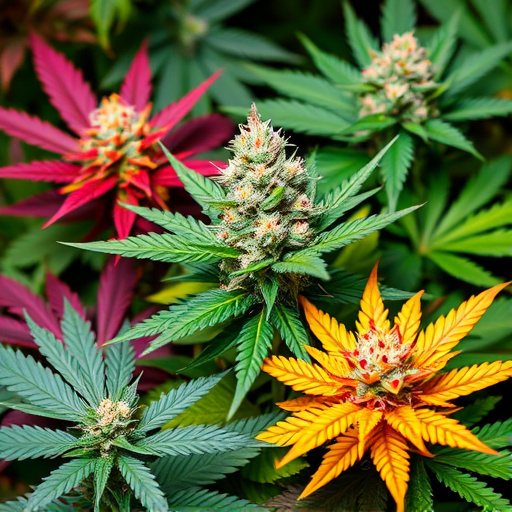
Cannabis flowers, known for their vibrant and diverse colors, are more than just visually appealing; they’re a reflection of complex chemical processes. Understanding this transformation involves delving into the world of cannabinoids and terpenes—the key players behind not only marijuana’s effects but also its distinctive hues. These compounds contribute to what makes each strain unique, from the bold reds and oranges of certain varieties to the subtler yellows and greens.
Cannabinoids like THC and CBD, along with a myriad of terpenes, are responsible for the plant’s aroma, flavor, and even its color. Terpenes, aromatic compounds produced by cannabis, not only give strains their characteristic scents but also influence the final pigment. The interaction between these substances creates a complex symphony of colors in marijuana flowers, making colorful marijuana strains highly sought-after among enthusiasts who appreciate both the aesthetics and the intricate chemistry behind them.
– The Role of Carotenoids in Cannabis Coloration

The vibrant and diverse range of colors seen in cannabis flowers is largely attributed to the presence of carotenoids, a group of pigments that play a crucial role in their visual appeal. These organic compounds are responsible for the bright hues, from fiery oranges and bold yellows to deep reds and even purples. Carotenoids not only add beauty to colorful marijuana strains but also serve as indicators of the plant’s health and maturity.
As cannabis plants mature, the balance of different carotenoid types shifts, leading to the characteristic color changes. For instance, β-carotene is dominant in early flower development, giving a bright yellow or green tint. As the flowers age, other carotenoids like xanthophylls and anthocyanins become more prevalent, contributing to the richer colors. This natural process results in the stunning visual variety among different colorful marijuana strains.
Cannabis flower color changes are a fascinating result of its complex chemical composition, particularly the presence of carotenoids. These natural pigments not only contribute to the vibrant hues of various marijuana strains but also play a role in protecting the plant from environmental stressors. Understanding these chemical dynamics is key to appreciating the diversity and beauty of colorful marijuana strains while shedding light on their unique characteristics and potential therapeutic benefits.

